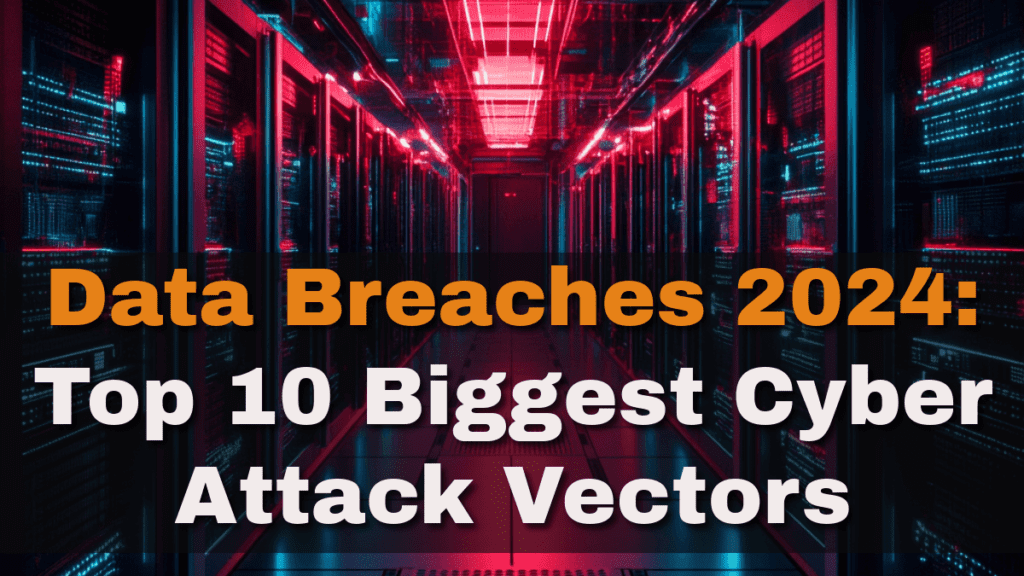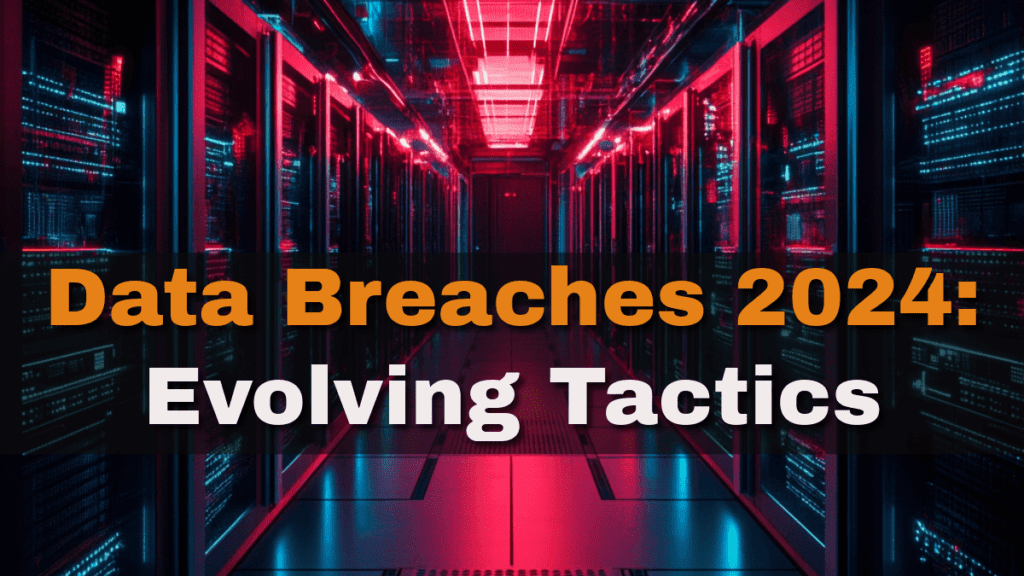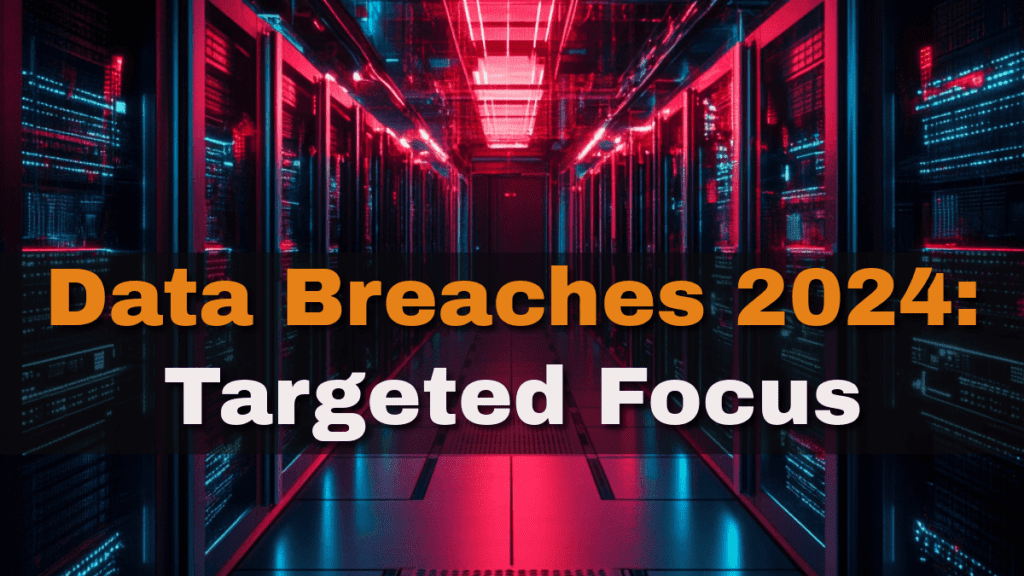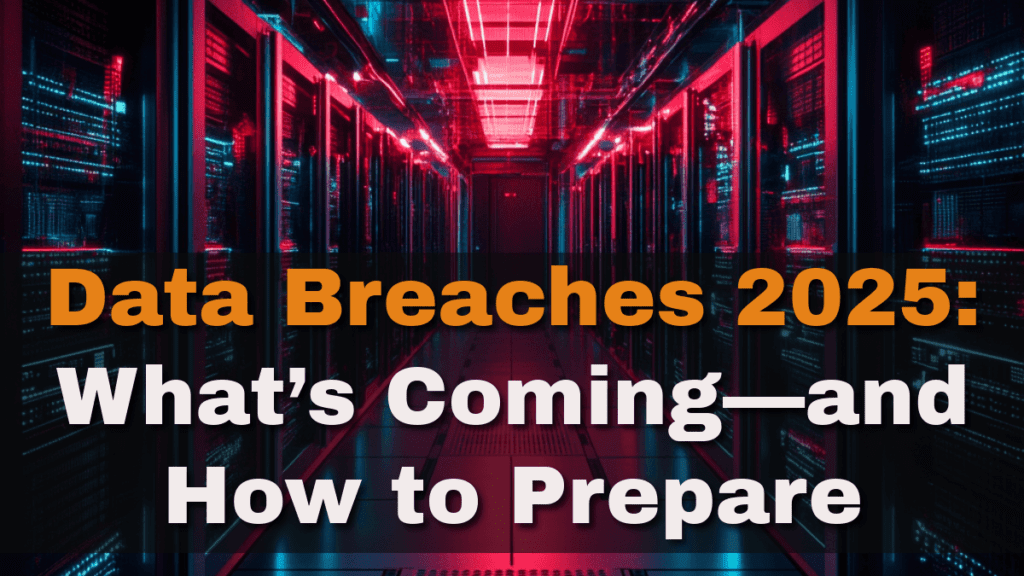The Rising Tide of Data Breaches: A 2024 Analysis and 2025 Forecast
In 2024, the world of cybersecurity faced a reckoning. Data breaches didn’t just persist—they escalated, hitting organizations with a record-breaking global average cost of $4.88 million per incident, a 10% jump that marked the steepest annual rise since the pandemic. This wasn’t just about money; it was about disruption, eroded trust, and a stark realization: cybercriminals are faster, smarter, and more relentless than ever. From phishing emails crafted by AI in mere minutes to ransomware gangs extorting millions without even encrypting a file, 2024 was a year that tested our defenses—and found them wanting.
As someone who’s tracked data breach threats for over two decades, I’ve seen the landscape shift, but never quite like this. The threats of data breaches in 2024 weren’t just more frequent; they were more sophisticated, exploiting everything from unpatched edge devices to sprawling cloud environments. And as we peer into 2025, one thing is clear: the storm isn’t over. It’s evolving.
This article unpacks the defining trends of data breaches in 2024—rising costs, rampant infostealers, and high-profile breaches like Snowflake—while weaving in additional incidents that shaped the year. Then, we’ll look ahead to 2025, forecasting what’s next and offering practical steps to stay ahead. This isn’t just a report; it’s a call to action. Read it, share it, and let’s talk about how we fight back.

Data Breaches of 2024: The Year Cybercrime Hit Its Stride
A Price Tag Too High to Ignore
Data breaches in 2024 weren’t just costly—they were crippling. The global average hit $4.88 million, fueled by business downtime and the scramble to support customers post-breach. That’s not just a statistic; it’s a warning. Organizations that ignored cybersecurity paid dearly, and not just in dollars. Reputations shattered, operations stalled, and in some cases, businesses folded.
Take the Snowflake mega breach, a wake-up call for the cloud era. Attackers used credentials stolen by infostealers to access sensitive data from over 165 organizations, exposing millions of records. One victim reportedly paid a ransom, though the amount remains undisclosed. Then there was Change Healthcare, where the BlackCat gang breached systems, stole data on 100 million people, and demanded $22 million—crippling healthcare operations nationwide. Even Disney wasn’t spared, with internal systems hit via infostealer-compromised credentials, leaking sensitive corporate data.
These weren’t isolated incidents. From AT&T and Ticketmaster to the U.S. Department of Defense, data breaches in 2024 proved that no one is untouchable. Smaller targets suffered too—like the Ohio School Boards Association, where a pre-school-year cyberattack disrupted communication for 3,500 districts. The lesson? Cybercrime doesn’t discriminate.

Top 10 Biggest Cyber Attack Vectors: Old Tricks, New Twists
The pathways into our systems were both familiar and alarmingly innovative:
- Phishing: Still king, phishing thrived in 2024, supercharged by AI that churned out convincing lures in just five minutes—down from 16 hours for humans. It’s simple, scalable, and devastatingly effective.
- Exploitation of Vulnerabilities: Attackers actively target vulnerabilities, especially zero-day exploits, in internet-facing network appliances (like firewalls and VPNs) and public-facing applications. These exploits can lead to remote code execution and unauthorized access, making them a critical entry point into corporate networks. The speed of exploitation after vulnerability disclosure continues to be rapid
- Stolen or Compromised Credentials: Stolen via infostealers, these were the skeleton keys of 2024. Over 90% of breached companies had credentials leaked in stealer logs, often from personal devices (70% of which hold corporate access).
- Malware: This broad category encompasses various malicious software like ransomware, infostealers, Remote Access Trojans (RATs), and malicious scripts. Malware is frequently delivered through phishing emails, drive-by downloads, or exploited vulnerabilities and is used for various purposes, including data exfiltration, lateral movement, and causing disruption.
- Edge Devices: Internet-facing appliances—firewalls, VPNs—became hacker playgrounds. Starting in January, exploitation attempts spiked, targeting unpatched flaws in gear from Ivanti, Palo Alto Networks, Cisco, SonicWall, Citrix, and Check Point. Zero-days like CVE-2024-21287 and CVE-2024-20953 were chained to devastating effect.
- Social Engineering (Beyond Phishing): This involves manipulating individuals to gain access or information. Techniques like voice phishing (vishing) are increasingly used to deceive users into divulging credentials or performing actions that compromise security. Attackers gather personal information to make these attacks more convincing.
- Abuse of Legitimate Tools (Living Off The Land – LOLBins): Attackers increasingly leverage built-in operating system tools and legitimate software for malicious purposes, such as reconnaissance, lateral movement, and defense evasion. This tactic helps them blend in with normal system activity and avoid detection. Examples include PowerShell, cmd.exe, and schtasks.exe.
- Attacks Targeting Edge Devices: Edge devices like firewalls, VPN gateways, and routers are prime targets for attackers due to their internet exposure and role in network traffic flow. Exploiting vulnerabilities in these devices can provide direct access to internal networks.
- Targeting External Remote Services: Services like VPN, RDP, and SSH, while necessary for remote access, are frequently targeted by attackers to gain initial entry Weak security practices, such as default passwords or unpatched vulnerabilities in these services, make them attractive targets.
- Drive-By Compromise: This involves attackers compromising websites to deliver malware to visitors, often without requiring any direct interaction from the user beyond visiting the infected site. This can be achieved through vulnerabilities in web browsers or plugins.
- Cloud Platform Threats: With the increasing adoption of cloud services, attacks targeting cloud infrastructure, including the compromise of cloud accounts, API keys, and misconfigurations, are a significant and growing attack vector. Attackers can gain access to sensitive data and resources by exploiting weaknesses in cloud environments. Attackers moved fast—lateral movement in 48 minutes, data exfiltration in four hours—often mimicking normal activity to dodge detection in 80% of cases. Legitimate tools fueled 60% of hands-on-keyboard attacks, blending malice with the mundane.
Infostealers: The Silent Epidemic
If the data breaches of 2024 had a defining villain, it was infostealer malware. Infection attempts soared by 58%, turning personal devices into corporate liabilities. These “spray-and-pray” attacks didn’t care who you were—they just wanted your credentials. And they got them, fueling breaches at Snowflake, Change Healthcare, Disney, and beyond. The RockYou2024 leak—10 billion plaintext passwords—supercharged credential stuffing, making stolen logins a hacker’s dream.
Ransomware Attack – Its Ruthless Evolution
Ransomware didn’t just encrypt—it stole. BlackCat’s Change Healthcare heist and Jackson County’s IT shutdown showed how exfiltration upped the stakes. Healthcare and education bore the brunt, with manufacturing and critical infrastructure (OT/ICS) close behind. The disruption of LockBit birthed new players like RansomHub, while BianLian pivoted to pure extortion. The message? Pay up, or your secrets go public.

The Actors: A Crowded Stage
The threat landscape in data breaches in 2024 was a chaotic mix of actors, each with distinct motivations and increasingly sophisticated tactics:
-
Cybercriminals: Driven by financial gain, they dominated with ransomware, data theft, and credential sales. The takedown of giants like LockBit spurred the rise of nimble affiliate networks like RansomHub and INC/Lynx, offering higher payouts to attract talent. Groups like BianLian adapted, shifting to data theft and extortion as encryption detection improved.
-
Nation-State Actors: Espionage was their game, with actors from China, Russia, and Iran seeking persistent access to critical systems for intelligence and future disruption. Russian groups unleashed destructive malware in Ukraine, while Chinese actors like Volt Typhoon and Flax Typhoon embedded themselves in U.S. infrastructure. Iran explored GenAI for vulnerability research, and North Korea’s Lazarus Group hit critical sectors.
-
Hacktivists: No longer amateurs, they targeted OT/ICS environments with basic but effective techniques. CyberArmyofRussia_Reborn (CARR) hit internet-exposed OT devices to disrupt and amplify their messages.
-
Initial Access Brokers (IABs): These middlemen thrived, selling network access—often via infostealer-stolen credentials—to ransomware affiliates. Their market buzzed with activity, feeding the broader ecosystem shaping data breaches in 2024.

Evolving Tactics: Innovation in Action
Attackers adapted relentlessly in data breaches in 2024:
-
Legitimate Tools (LOLBins): Used for evasion and persistence in 60% of attacks.
-
Speed: Faster breakout times—lateral movement in 48 minutes, exfiltration in four hours.
-
Operational Relay Boxes (ORBs): Chinese actors used these compromised devices to anonymize and persist.
-
Social Engineering: Voice phishing (vishing) surged, exploiting human trust to bypass tech defenses.
-
Private LLMs: Some explored these for operational security, avoiding public AI oversight.

Targeted Focus: Specialization Emerges
Certain actors zeroed in on specific prey:
- China-Nexus Groups: Hit telecoms, finance, and government for espionage.
- VOLTZITE: Stole OT data, like GIS, from critical infrastructure.
- BAUXITE: Targeted OT/ICS globally, striking energy and manufacturing.
Top 10 Biggest Data Breaches in 2024 Targeted Industries: Who Suffered Most—and Why
Cybercrime hit broadly, but some sectors were pummeled due to unique weaknesses:
- Manufacturing: Over 50% of ransomware victims, thanks to legacy systems, extensive remote access, operational priorities, and lax help desks. Phone-based social engineering also thrived here.
- Healthcare: Hammered by script attacks, legacy exploits, and credential theft, with reconnaissance targeting network data adding pressure.
- Tech & Professional Services: Faced credential theft, lateral movement via RMM abuse, and third-party tool attacks—gateways to clients’ networks. Cloud attacks hit them hardest against professional, scientific, and technical services due to the sensitive data they manage.
- Government & Education: Government saw information stealing malware, RATs, and advanced hacking tools; education mirrored healthcare’s script-heavy threats.
- Critical Infrastructure (OT/ICS): Drew ransomware, hacktivists, and groups like VOLTZITE and BAUXITE, targeting oil, gas, electric, water, and manufacturing.
- Finance & Insurance: Spiked in critical attacks, with VAULT PANDA leading the charge.
- Telecoms: China-nexus actors like LIMINAL PANDA and OPERATOR PANDA, plus VOLTZITE, sought backdoors.
Vulnerability Management: A Race Against Time
Attackers feasted on old and new vulnerabilities alike, with over 57% of exploits targeting CVEs from 2020 or earlier. The average time-to-exploit (TTE) dropped to five days post-disclosure, driven by rapid use of public research and POC exploits.
Key Challenges
- Perimeter Devices: Firewalls and VPNs stayed vulnerable—entry points too critical to patch without downtime. Zero-days in Ivanti, Palo Alto, Cisco, Fortinet, and Sophos wreaked havoc.
- Exploit Chaining: Combining flaws to penetrate, escalate, and evade became standard.
- OT/ICS: Regulations and uptime needs made patching a logistical nightmare.
How to Fight Back
- Patch Fast: Prioritize and automate, especially for edge devices.
- Full Visibility: Map your attack surface and shrink it.
- Prioritize Risks: Focus on exploitable, high-impact flaws using threat intel.
- Layer Defenses: Proactive testing and detection are key.
- OT Strategies: Target loss-of-control risks with frameworks like SANS ICS 5.
- Monitor: Catch exploitation attempts early.
- Educate: Counter social engineering, the frequent precursor.

2025: What’s Coming—and How to Prepare
The horizon isn’t bright—it’s stormy. Here’s what 2025 holds, based on 2024’s lessons and two decades of watching threats evolve:
Ransomware’s Relentless Surge
Ransomware will hit new heights in 2025, with exfiltration-only attacks forcing a rethink of recovery. It’s not just about decryption anymore—it’s about data privacy and reputation. New collectives will rise from LockBit’s ashes, diversifying the threat.
Prediction: Healthcare and critical infrastructure will face relentless pressure.
Cloud and SaaS: The Next Frontier
Cloud breaches like Snowflake’s are the tip of the iceberg. Attackers will target SaaS apps for sensitive data and lateral movement and extortion.
Prediction: Without MFA and real-time monitoring, cloud adoption will be a liability.
Edge Devices: Weak Links Persist
Unmanaged network appliances will stay vulnerable. High-severity flaws in network appliances such as Ivanti, Cisco, and others will keep attackers coming.
Prediction: Exploitation will spike unless patching becomes a priority.
AI: The Double-Edged Sword
AI-powered attacks will soar—phishing emails indistinguishable from reality, disinformation turbocharged by LLMs, vulnerabilities uncovered faster and code development.
Prediction: Defenders must wield AI too, automating detection to match the pace.
Infostealers: The Credential Crisis Continues
Infostealers will remain a linchpin for obtaining credentials and facilitating high-impact data breaches, feeding IABs and breaches.
Prediction: Organizations without MFA everywhere—especially in the cloud—will crumble.
Thriving IAB Market:
The market for illicit network access is expected to continue to thrive, with IABs targeting organizations of all sizes.
Prediction: IABs will continue to help increase the speed of activity of attacks, from entry / access to initial impacts.
Geopolitical Shadows
Nation-states will escalate cyber ops amid global tensions, targeting infrastructure and sowing chaos. Non-state actors will also increase activity, due to changes in the geopolitical landscape, tariffs, election results, or individuals.
Prediction: Attribution will get murkier as crime and state motives blur.
Lowered Barrier to Entry:
The increasing availability of sophisticated attack tools and services will continue to lower the barrier to entry for less capable threat actors, potentially leading to a higher volume of attacks.
Prediction: It will continue to become easier and easier to enter.
Focus on Operational Continuity:
Threat actors will likely place a growing emphasis on security and operational continuity for their illicit activities, leading to increased use of encrypted communication platforms and vetting of affiliates.
Prediction: They will also continue to specialize as well as leveraging multiple platforms, encryption, and other tools to increase the speed of action, analysis, and exploitation.
Supply Chain: The Ripple Effect
Vendor attacks will grow, exploiting trust requiring increased awareness around attack surfaces and their components.
Prediction: One breach could cascade across dozens of organizations—think PyPI, but bigger.
Conclusion: Act Now or Pay Later
Data breaches in 2024 was a brutal lesson: cybercriminals don’t rest, and neither can we. They exploited phishing, infostealers, and edge devices with terrifying speed. They turned ransomware into a data-theft machine and made the cloud a battleground. In 2025, they’ll double down.
But we’re not helpless. Here’s your playbook:
-
MFA Everywhere: No exceptions, especially for cloud and privileged access.
-
Patch Fast: Edge devices and old CVEs are ticking time bombs. But the real issue is the mean time to exploit, is down to hours.
- Proactive Measures: Implement a defense-in-depth approach to detect and remediate malicious activity even before a vulnerability is exploited. Conduct continuous penetration tests, the era of once a year or quarterly is over.
-
Monitor Relentlessly: AI and threat intel can spot what humans miss, but focus on the adversary tactics, techniques and procedures and trigger off behavior vs relying on signatures.
-
Train Users: While phishing and weak passwords are still the weakest links, its important to focus on how we are triggered by these social engineering tricks, as the days of spotting a scam emails due to AI.
-
Plan for Extortion: Backups aren’t enough—protect your data’s exposure.
- OT-Specific Strategies: For OT/ICS environments, focus on vulnerabilities that could cause a loss of view or control of the process. Use frameworks like the SANS ICS 5 Critical Controls for guidance. But also, integrate your monitoring here, otherwise your playing with Schrodinger’s Cat.
- Risk-Based Prioritization: Assess the threat levels of vulnerabilities and prioritize remediation efforts based on exploitability, potential impact, and threat intelligence. Focus on external-facing assets and critical systems.
After 25 plus years covering this beat, I’ve never seen stakes this high. Share this article. Talk about it. Act on it. The next breach is coming—let’s make sure it’s not ours.





